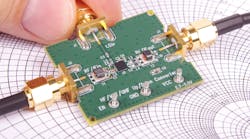This webinar was originally held on March 7th, 2024, and is now available for on demand viewing.
Duration: 1 hour
Already registered? Click here to log in.
Summary
Testing electronic products and systems should be done as often and as thoroughly as possible, to ensure what is being created meets the desired standards for performance and functionality. In a manufacturing environment, automated test systems (ATS) perform the needed functional testing required in a rapid and cost-effective manner. A PXI-based ATS is a scalable and modular way to address the needs of the test at hand in whatever configuration needs to be created to serve it.
Creating an Automated Test System
An ATS can be constructed using a variety of form factors to optimize space, cost, and performance. It can be made up of traditional box instrumentation, or using modular,chassis-based subsystems. There is no ‘one size fits all’ architecture when building an ATS. The instruments involved usually have one function, performing one type of measurement or stimulus (e.g., programmable power source or DMM). There is no defined standard form-factor, and manufacturers are free to use as much or as little space as the application requires. There is no defined or standard control interface, and systems can be based on USB, Ethernet, LXI, CANbus, PXI, or even something proprietary.
Modular test instruments involve subsystems that are typically constructed out of smaller building blocks (cards or modules) that plug into a chassis. A soft front panel replaces the physical display and controls, and multiple instrumentation functions can be housed in a smaller footprint. A modular chassis can be custom configured to better match what an application requires. A modular solution facilitates maintainability, as faulty modules can be easily swapped out. Modular open systems have rigid specifications that manufacturers must adhere to, as it promotes interoperability between multiple suppliers across a broad range of functionality and measurement/stimulus types.
A modular approach enables versatile instrumentation subsystems to be created in a small footprint. Examples include systems based on PXI/PXI Express, AXIe, VXI, and others. Some may choose to develop a test platform that is modular, but proprietary in nature, especially when the application they are targeting demands more of an attribute like design space, power, or cooling than what is available in an open-standard solution. Examples of applications that may require a proprietary solution include high-voltage or microwave switching, high power loads, and other special needs. This approach does restrict the modules that can be sourced.
Open Modular Test Instrument Standards
The first open-industry standard for test was VXI (VME eXtensions for Instrumentation), and was introduced in 1987. Typically found in a 6U form factor, it added module-to-module triggering, synchronization, and analog bus connections that were not defined in VME. The programming interface was based on VISA/VXI plug & play, and support from multiple vendors facilitated versatile, multi-function subsystems in a small footprint. Currently, the VXI platform has been widely recognized to be in ‘sunset’ status.
Conceived by National Instruments in 1997, the PXI specification was made an open standard in 1998, and is supported by the PXI Systems Alliance (PXISA), an independent organization funded by member companies. The PXISA promotes and evolves the standard, maintaining backward and inter-member compatibility to expand PXI product offerings and application coverage. The PXI ecosystem includes ancillary products such as mass Interconnect systems as well.
PXI has a maximum data rate of 32-bit at 133 Mb per second, which was fine in the 1990s, but now technology needs data rates measured in GHz per second. That’s why PXI Express (PXIe) was introduced. Added to the PXI Standard In 2006, it provides for a PCI Express Multi-Gigabit Data “Pipe” to PXI, accelerating data acquisition and high-speed data transfer. Backward compatibility is built in, with hybrid slots in a PXIe chassis supporting both old PXI and PXIe boards.
Available in 3U- and 6U-high chassis, original PXI is known as PXI-1, based on Compact PCI, adding a second connector for triggering/synchronization (J2). PXI Express, based on PCI Express, incorporates two different connectors (XJ3 and XJ4), and PXI-Hybrid was created to facilitate PXI/PXIe compatibility.
Looking forward
WIth worldwide support and integration, and PXISA members based in NAM, Europe, and Asia, PXI- and PXIe-based modular test systems can support almost every application. Addressing the test needs of demanding market spaces including 5G telephony, autonomous driving, advanced IoT, and simulation, among others, it can significantly ease the creation of systems to address complex testing demands.
Speaker
Tom Sarfi
Global Manager of Business Development
Pickering PXI
Tom Sarfi is the Global Manager of Business Development at Pickering Interfaces. He started his career as a test systems development engineer before moving into strategic product management roles in the test and measurement industry. He is on the board of directors of the PXI Systems Alliance and the LXI Consortium and served as the president of the VXIbus Consortium for several years. Tom has authored and presented multiple papers at IEEE ATE conferences and holds a BSEE from Case Western Reserve University in Cleveland, OH.
Moderator
Alix Paultre
Editor at Large
Endeavor Business Media





